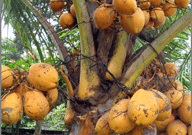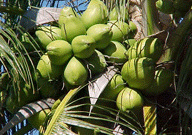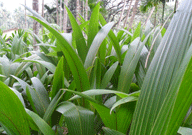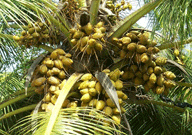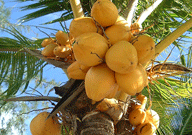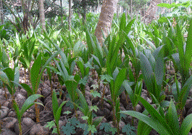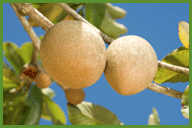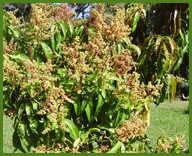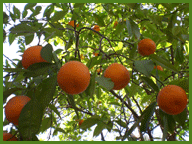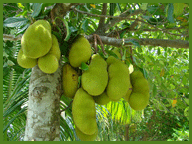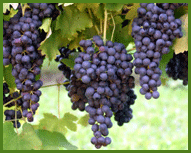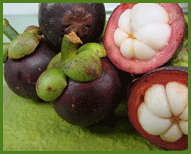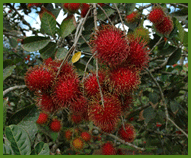Trees
Kuttiadi Coconut Tree
Coconut is a fruit of the coconut palm tree, its trunk is one to two feet in diameter. It has no branches but carries a crown leaves of about 70 to 100 feet above the ground, its leaves is like a feather and with many segments, leaves are usually 10 to 20 feet long. The coconut fruit hang at the bases of the leaves in clusters of about 10 to 15. Several clusters ripen during the year. A tree may produce 200 coconuts a year, but the average is just around 40. Coconut tree grows wild on tropical seacoasts, and is cultivated in moist, frost-free climates, it is abundant in Southeast Asian countries.
Ever wonder how coconut trees can easily increase in numbers? When coconut ripen, they fall from the tree and are frequently washed out to the sea. Some may drift for months before they are cast up by the waves onto the shore. After 4 to 5 months, the seed sprouts and a new tree begins to grow. In about 6 years the tree will begin to bear coconut and it will reach its full bearing time at 20 years. Coconut tree is very strong and it can resist strong typhoons, coconut tree does not also need a lot of maintenance unlike the mango tree which needs a lot of care and fertilizers.
Description of the Coconut Fruit:
The coconut has a smooth greenish covering. Within the outer shell is a fibrous husk one to two inches. The inner shell is brown and hard. When the coconut is still young it contains a large amount of fluid or juice, during this stage the coconut meat is ideal to be eaten alone or can be use for salad or can be added with milk for a nutritional drink. When the coconut mature most fluid is absorbed and its flesh thickens and hardens.
Fruits
Kuttiadi Coconut Tree
Ever wonder how coconut trees can easily increase in numbers? When coconut ripen, they fall from the tree and are frequently washed out to the sea. Some may drift for months before they are cast up by the waves onto the shore. After 4 to 5 months, the seed sprouts and a new tree begins to grow. In about 6 years the tree will begin to bear coconut and it will reach its full bearing time at 20 years. Coconut tree is very strong and it can resist strong typhoons, coconut tree does not also need a lot of maintenance unlike the mango tree which needs a lot of care and fertilizers.
Description of the Coconut Fruit:
The coconut has a smooth greenish covering. Within the outer shell is a fibrous husk one to two inches. The inner shell is brown and hard. When the coconut is still young it contains a large amount of fluid or juice, during this stage the coconut meat is ideal to be eaten alone or can be use for salad or can be added with milk for a nutritional drink. When the coconut mature most fluid is absorbed and its flesh thickens and hardens.
Fruits
Sapota graft
Sapota, popularly known in India as chiku. In India it is cultivated for fruits which are liked all over the country. The fruit is a fleshy berry, variable in shape, size and weight (75-150g). The skin is thin, rusty brown somewhat scurfy looking like Irish potato, and the pulp soft, melting, crumbling with a sandy or granular texture with 1-5 hard, black seeds.
Mango graft
Mango is one of the most common fruit in India. Almost all the commer-cial varieties in the world belong to the former category and do not come true to type from seed. Therefore it is necessary to multiply through asexual means. Mango is a highly cross pollinated crop, there is enormous variation in the seedling raised even from the fruit and a single tree, and for obtaining uniformity in plant performance, the vegetative propagation method like grafting.
Orange graft
Orange trees generally range in height at maturity from 22 to 30 feet. Leaves are dark green, pointed with a round base and from 3 to 5 inches in length. Leaves can live for as long as three years. Flowers are white. The fruit itself is technically a berry ranging from 2 to 4 inches in diameter at full size. The number of seeds in the fruit can vary according to a variety of factors with some 'cultivars' like navels being almost completely seedless.
Jackfruit
The jackfruit tree is handsome and stately. In the tropics it grows to an enormous size, like a large eastern oak. All parts contain a sticky, white latex. The leaves are oblong, oval. Male and female flowers are borne in separate flower-heads. Jackfruit is the largest tree-borne fruit in the world, reaching 80 pounds in weight and up to 36 inches long and 20 inches in diameter. The exterior of the compound fruit is green or yellow when ripe.
Mangostin
This fruit is extremely rich with enzymes, vitamins, trace minerals, Anthocyanins, and antioxidants. This plant’s fruit is edible, it has a specific taste and played an important part in the traditional medicine of the South Asia populations. You eat the white tender inside part of the plant, and those who have tried it said that its taste is something between strawberry, peach and vanilla ice cream. The plant as always been used to reduce body temperature as well as to stop the spreading of particular infections.
Rambutan
The rambutan, Nephelium lappaceum, is a fruit considered exotic to people outside of its native range. The rambutan is a relatively common fruit the same way an apple is common to many people in cooler climates. This may change for the rambutan over time as availability and distribution improve. The fruit should be 2" to 3" long and oval but can be almost round in some varieties. The shape can also be more elongated if the seed does not develop.
Home | About us | Kuttiadi Coconut Tree | Flowering Plants | Medicinal Plants |
Fruit Plants | Ornamental Plants | Gallery | Contact us
Fruit Plants | Ornamental Plants | Gallery | Contact us
Call us: +91 9744477770, 9544477770
email: info@reshminursery.com
email: info@reshminursery.com




